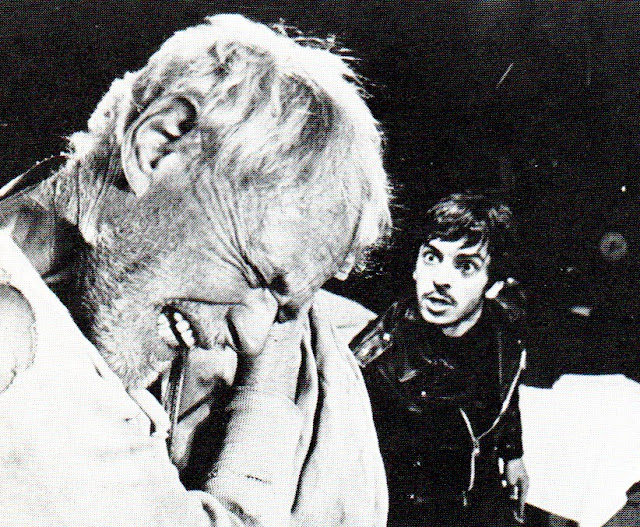THE CARETAKER
 |
| William Prince, Philip Campanella. |
"In Lieu of Reviews"
Reviews of live theatre being impossible during these days of the pandemic, THEATRE'S LEITER SIDE is pleased to provide instead accounts of previous theatre seasons--encompassing the years 1970-1975-for theatre-hungry readers. If you'd like to know the background on how this previously
unpublished series came to be and what its relationship is to my three The Encyclopedia of the New York Stage volumes (covering every New
York play, musical, revue, and revival between 1920 and 1950), please check the
prefaces to any of the entries beginning with the letter “A.” See the
list at the end of the current entry.
 |
| W.T. Martin, Philip Campanella. |
THE
CARETAKER [Dramatic
Revival] A: Harold Pinter; D: Gene Feist; S: Holmes Easley; C: Theodore
Skipitares; L: Barry Arnold; M: Philip Rosenberg; P: Roundabout Theatre
Company; T: Roundabout Theatre (OB); 6/23/73-7/22/73 (36)
British playwright Harold Pinter’s enigmatic,
three-man drama about a tramp (William Prince) who arrives to share a rundown
basement apartment with two mysterious brothers received an engrossing
production. Howard Thompson said a “fresh thrust” had been added “to the verbal
exchanges.” Done in the Roundabout’s small arena theatre located in the
basement of a Chelsea supermarket, the play had the appropriate intimacy
required for its muted acting and staging. Thompson called Gene Feist’s
direction “impeccable” and thought all the actors were sensitive to the needs
of their roles.
Douglas Watt believed Feist had brought out more of
the play’s comedy than its menace, a “misconception” that nevertheless “works,”
while John Beaufort had the opposite feeling, noting that “The rich comic possibilities
. . . are not always fully realized,” although he appreciated “a production
marked by intelligence, imagination, and discriminating artistry.” He thought “the
play’s balances, tensions, and terrors are convincingly realized.” William Prince
was considered “brilliant,” as Christopher Sharp put it.
Previous entries:
Abelard and
Heloise
Absurd Person
Singular
AC/DC
“Acrobats”
and “Line”
The Advertisement/
All My Sons
All Over
All Over Town
All the Girls Came
Out to Play
Alpha Beta
L’Amante Anglais
Ambassador
American Gothics
Amphitryon
And Miss Reardon
Drinks a Little
And They Put
Handcuffs on the Flowers
And Whose Little
Boy Are You?
Anna K.
Anne of Green
Gables
Antigone
Antiques
Any Resemblance to Persons Living or Dead
Applause
Ari
As You Like It
Augusta
The Au Pair Man
Baba Goya [Nourish the Beast]
The Ballad of Johnny Pot
Barbary Shore
The Bar that Never Closes
The Basic Training of Pavlo Hummel
The Beauty Part
The Beggar’s Opera
Behold! Cometh the Vanderkellens
Be Kind to People Week
Berlin to Broadway with Kurt Weill
Bette Midler’s Clams on a Half-Shell Revue
Black Girl
Black Light Theatre of Prague
Black Picture Show
Black Sunlight
The Black Terror
Black Visions
Les Blancs
Blasts and Bravos: An Evening with H,L.
Mencken
Blood
Bluebeard
Blue Boys
Bob and Ray—The Two and Only
Boesman and Lena
The Boy Who Came to Leave
Bread
A Breeze from the Gulf
Brief Lives
Brother Gorski
Brothers
Bullshot Crummond
Bunraku
The Burnt Flower Bed
Butley
Button, Button
Buy Bonds, Buster
The Cage
Camille
Candide (1)
Candide (2)
The Candyapple
Captain Brassbound’s Conversion